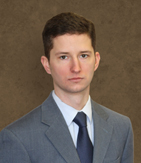
Kip Werking & Alan McBeth
Kip Werking is a registered patent attorney with ALG Intellectual Property, LLC who has a wealth of patent-prosecution experience in the electrical and computer-engineering arts. Throughout his career, Mr. Werking has participated in all aspects of U.S. patent prosecution, including hundreds of in-person examiner interviews at the U.S. Patent & Trademark Office, appeals, and personal appearances before the Board of Patent Appeals and Interferences.
Prior to joining ALG, Mr. Werking practiced as a patent attorney with a nationally recognized law firm in Alexandria, Virginia. Mr. Werking also clerked for the International Trade Commission in Washington, D.C.
Alan McBeth is a registered patent attorney for ALG Intellectual Property, LLC with engineering experience in a wide variety of technical disciplines, including computer architecture, operating systems, compilers, computer software applications, artificial intelligence, and networking.
Mr. McBeth has prepared and successfully prosecuted hundreds of patent applications throughout his career, with a focus on the field of computer engineering.

Recent Articles by
In general, the courts distinguish between functions and algorithms, and they require patent applicants to disclose algorithms to cure perceived deficiencies in functions. The problem with this line of reasoning is that both algorithms and functions under 35 U.S.C. § 112(f) are composed of the same things: steps. So the result of the algorithm requirement is to simply make patent applicants “fix” one step by specifying more steps. Accordingly, if the algorithm requirement is taken to its logical conclusion, then each step would be fixed with more steps, and each of those steps would be fixed with even more steps, like Russian dolls. Instead, the courts do not take the algorithm to its logical conclusion and, instead, only require a single layer: the original step and the further steps (i.e., algorithm) for it. This is arbitrary, confusing for patent applicants and examiners, and a poorly calibrated solution to concerns about software patents.

![[IPWatchdog Logo]](https://ipwatchdog.com/wp-content/themes/IPWatchdog%20-%202023/assets/images/temp/logo-small@2x.png)
